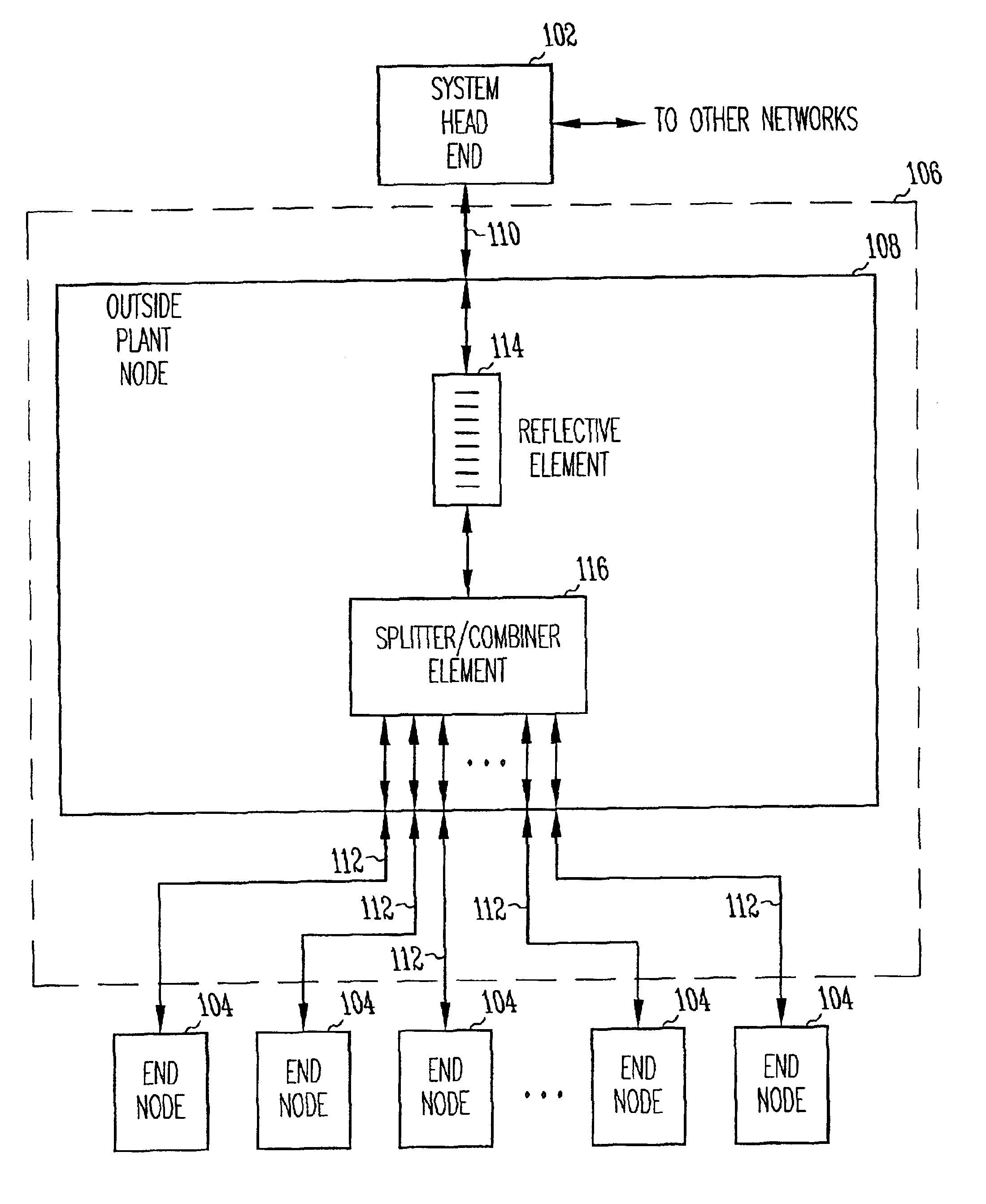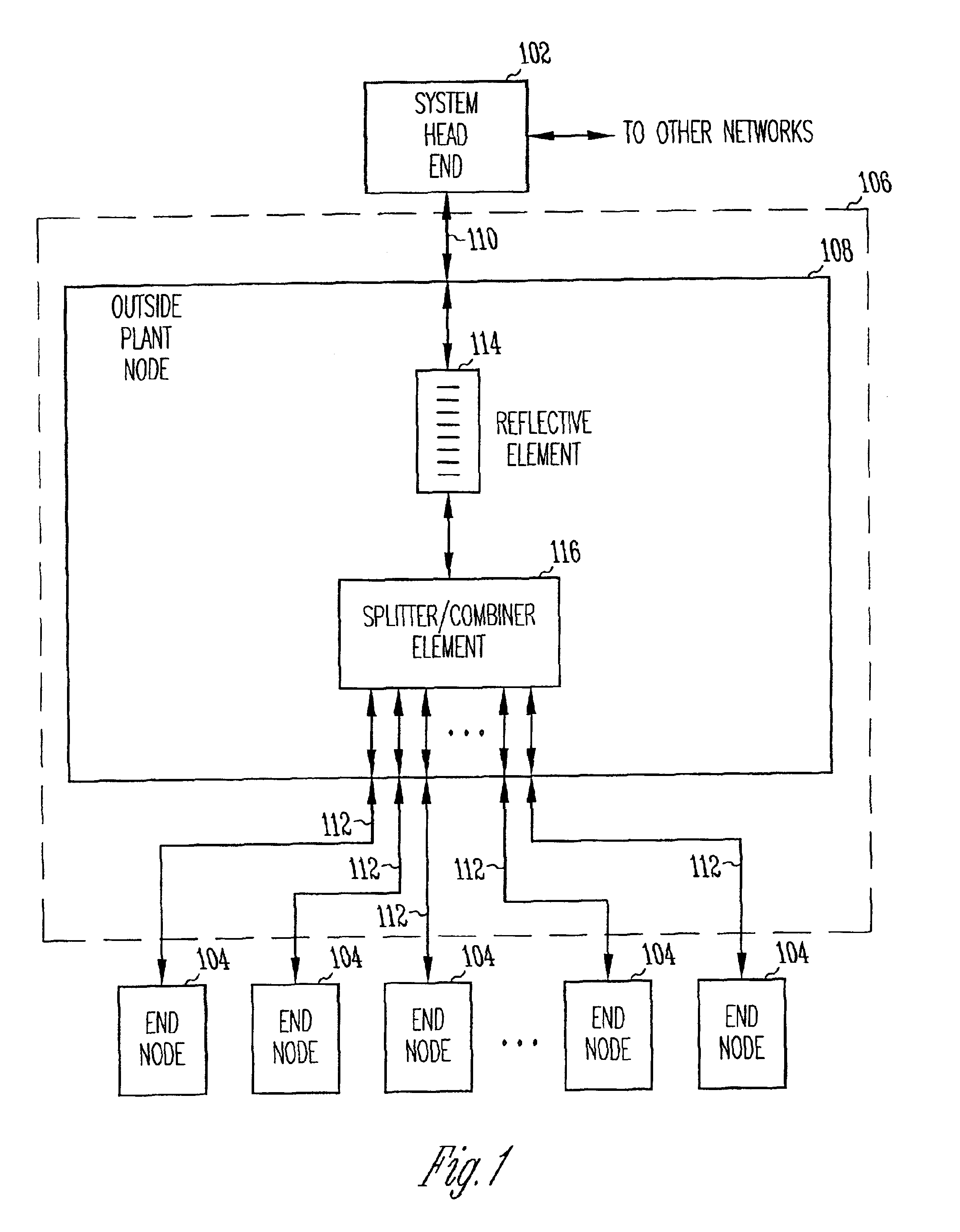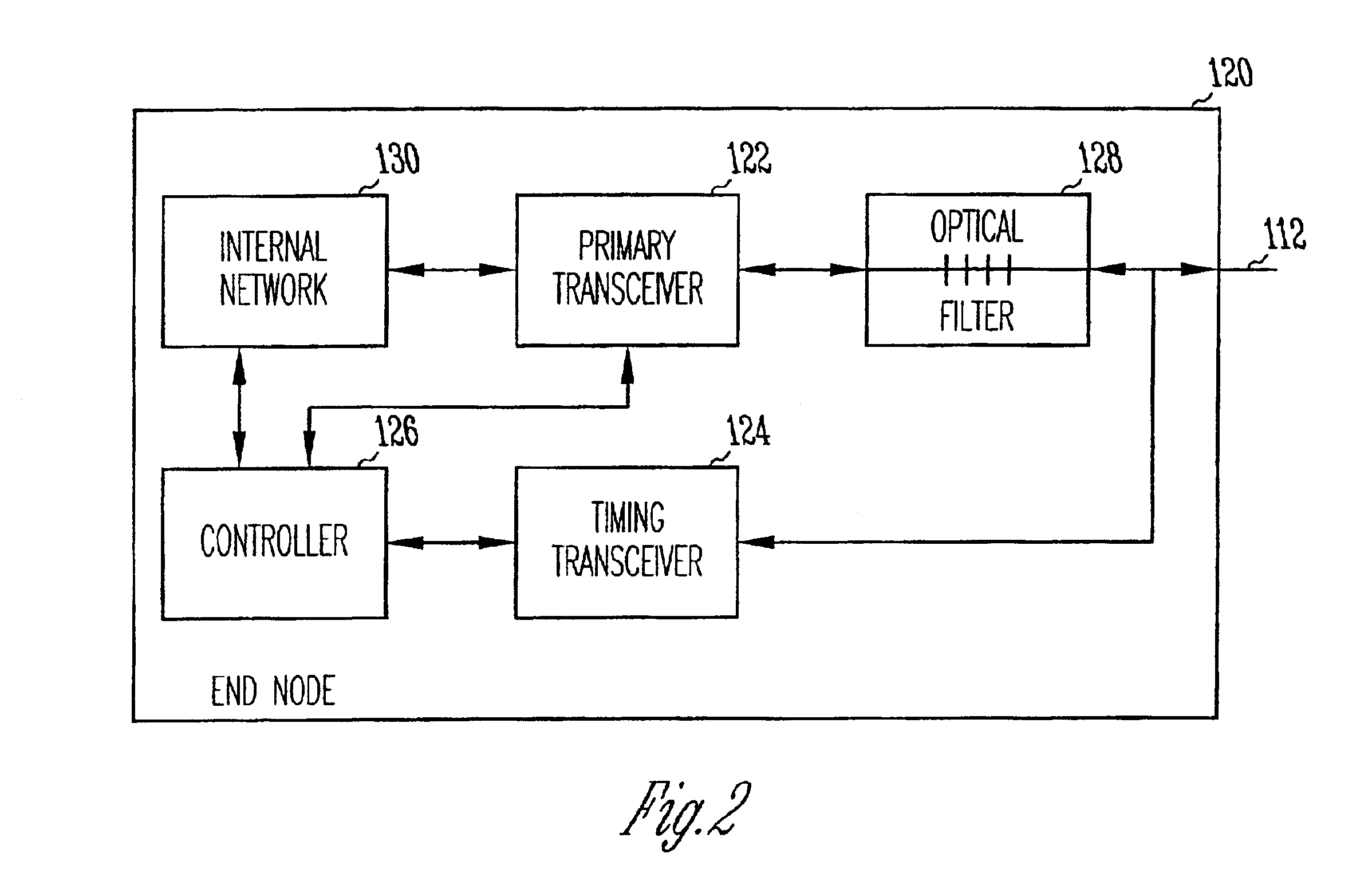Method and apparatus for transmission of upstream data in an optical network
a technology of optical network and transmission method, applied in the field of optical network, can solve the problems of significant network resource consumption, unsatisfactory and inefficient level of complexity, and transmission of upstream data
- Summary
- Abstract
- Description
- Claims
- Application Information
AI Technical Summary
Benefits of technology
Problems solved by technology
Method used
Image
Examples
Embodiment Construction
[0016]The present invention relates to optical networks. In accordance with one of the embodiments, remotely located end nodes transmit upstream data on a first wavelength through an optical network to a system head end followed by a timing signal on a second wavelength. The timing signals are reflected by a wavelength selective reflective element to each of the end nodes. The end nodes track the timing signals to determine when to transmit upstream data in accordance with a transmission sequencing schedule provided by the system head end. In accordance with this embodiment, the optical network includes an outside plant node coupled to the system head end with a distribution fiber. The outside plant node is coupled to the end nodes with drop fibers. The outside plant node may include an optical splitter / combiner element along with the wavelength selective reflective element.
[0017]In accordance with another embodiment, a method of coordinating transmission of upstream data between a ...
PUM
 Login to View More
Login to View More Abstract
Description
Claims
Application Information
 Login to View More
Login to View More - R&D
- Intellectual Property
- Life Sciences
- Materials
- Tech Scout
- Unparalleled Data Quality
- Higher Quality Content
- 60% Fewer Hallucinations
Browse by: Latest US Patents, China's latest patents, Technical Efficacy Thesaurus, Application Domain, Technology Topic, Popular Technical Reports.
© 2025 PatSnap. All rights reserved.Legal|Privacy policy|Modern Slavery Act Transparency Statement|Sitemap|About US| Contact US: help@patsnap.com



